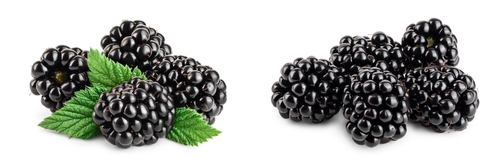Brits have been advised on ten of the best plants found across the country that can be used to gather food and ingredients from the wild.
Ecologists from Arbtech have shared their list of some of the most popular plants for foraging and given advice on when the best time to find and pick them would be.
Foraging for wild food is seen as a great way to connect with nature and an activity that has gained a lot of popularity in recent years, particularly on social media.
With the UK containing an abundance of plants that can be foraged for different ingredients all throughout the year, it can be a great and environmentally friendly way to source food, as long as it is done so sustainably.
However, with the increasing popularity of the activity in recent years, there have been parks around the country putting a ban on ‘excessive foraging’.
The collection of ingredients for commercial use, rather than personal use, can be detrimental to wildlife who rely on the food sources, as well as being detrimental to delicate ecosystems.
Andrew Ward from Arbtech commented: “Foraging can be a fun activity and something that is environmentally friendly if done in moderation and with our ecology in mind.
“The UK is home to some amazing plants that you can gather ingredients from in the wild and use at home, but always make sure that you are doing so safely.
“Fruits like wild strawberries and blackberries are a little easier to identify, but when collecting most food from the wild, always be 100% sure that you’ve identified the food correctly.
“And always forage sustainably. You should only be taking small amounts for personal use, as these food sources are vital for our wildlife and ecosystems.”
Top ten plants that can be foraged in the UK
Blackberries

Probably the most popular fruit that gets foraged in the UK, blackberries can be found in an abundance of places ranging from dense woodland to the side of busy roads. The best time to go picking is from late July through to early October.
Sweet Chestnuts
It is ideally best to forage for sweet chestnuts during early Autumn, and chestnut trees can often be found in woodland, parks or along trails. These must be cooked before eating, and the nut is the only edible part. Make sure you don’t mistake sweet chestnuts for horse chestnuts (conkers), as these are not edible and can be poisonous for humans.
Wild Garlic
Spring is the perfect time to collect wild garlic, but it is advised to do so early on into the season when the garlic is still young and full of fresh flavour. Typically growing in woodland, if you do stumble upon any, then there will usually be a lot of it.
Bilberry
A fairly common find in acidic woodland, heathland and moorland, bilberries are best to pick during the summer months and can also be eaten raw when fully ripe, although washing the fruit beforehand is advised.
Wild Strawberry
Usually found in partial shade amongst hedgerows or mixed woodlands, wild strawberries are a delicious fruit that can be picked from late spring and throughout the summer months.
Crab Apple
Can be commonly found across the UK but often easy to mistake for other types of apples, crab apples are best to look for from August to November time. They are small and tough, with a very sharp taste, so are best used for cooking.
Elderberry
Elderberries like rich and fertile ground so can be found in wet woodlands, but they have a wide tolerance so you can find them in scrubs, hedgerows and a wide range of woodlands towards the end of summer and the start of autumn. Elderberries must be cooked before eating them to safely remove the toxins.
Hazelnut
The nuts need to have grown to maturity and left to dry out for a bit until they become edible for humans, and the best time to forage for hazelnuts is during September and October.
Penny Bun (Boletus edulis)
A fairly common find in the UK and one of the most sought after wild mushrooms, the penny bun can be found in woodland and heathlands. It is said that the mushroom has a cap that looks like a well-baked bread roll. The best time to forage for penny bun mushrooms is in late summer to early autumn.
Three-cornered Leek
These are an invasive species, and it is illegal for you to plant any in the wild. Seeds can be spread by ants and can also be spread by shoes, so it is important to not spread the plant inadvertently. Therefore, the best time to forage for the plant would be before and after seed set, with April being a good time to avoid any risk of disturbing seeds.
It is important that you know the law around foraging. You must only take parts from above the ground such as leaves, fruits, flowers and bark under the Wildlife and Countryside Act 1981, as it is illegal to uproot plants without the landowners permission. This means roots and tubers are off limits. The Wildlife and Countryside Act makes it illegal to collect any wild plant or mushrooms from certain places, for example National Nature Reserves (NNR) or Sites of Scientific Importance (SSSI) without the permission of Natural England. You are legally allowed to pick anything growing wild for personal consumption, however, taking cultivated crops without permission is considered theft and is illegal under Section 4 (Property) of the Theft Act (1968) (England and Wales only).
Autumn Recipes: Spiced lamb skewers and curry-coated cauliflower